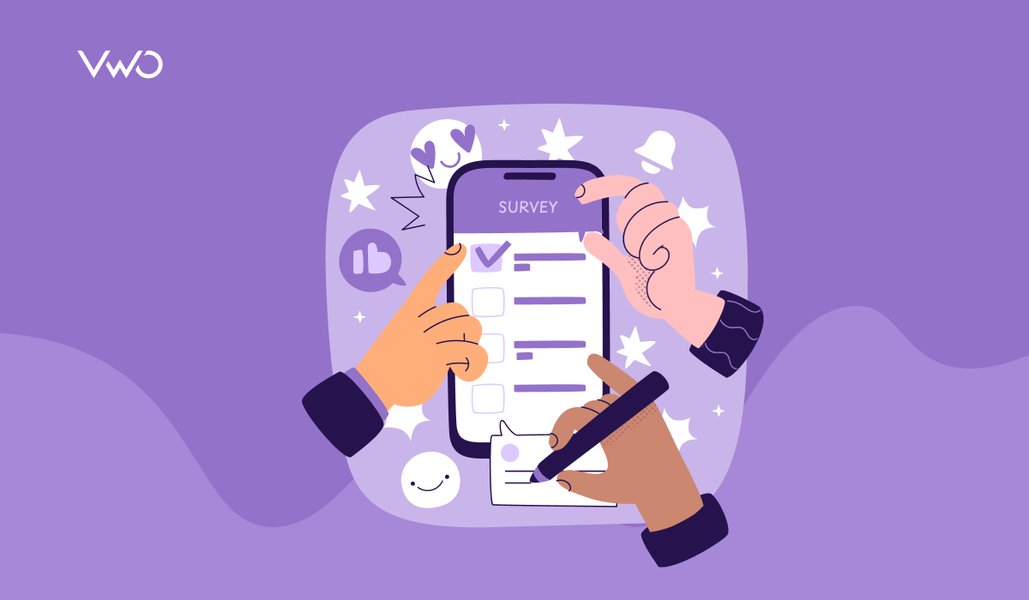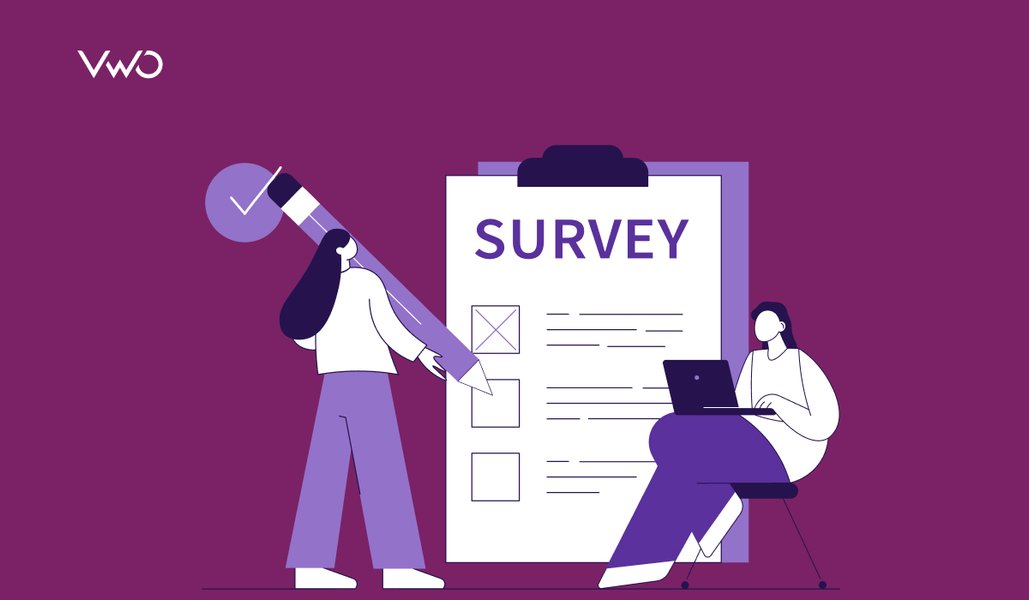In the bustling office of a rapidly expanding tech company, Kim is a product manager with many responsibilities piled on her desk. Her day is filled with tasks like product launches, maintenance, and the never-ending quest for customer feedback. But there’s one thing that drives her insane – surveys.
Kim conducts a series of surveys to gather customer feedback. However, analyzing the large volume of responses requires a significant amount of time and effort, and there is a possibility of missing out on valuable insights. Also, pilot testing the new survey structure and question format consumes time and delays the deployment. She needs a quicker way to deploy surveys and see what’s important in the survey data to make better decisions about her products.
If Kim’s problem resonates with you, then read on, for we’ve got a solution up our sleeves – surveys backed by generative AI technology.
Let’s explore this revolutionary technology, its differences from traditional AI, and how it simplifies creating and analyzing surveys for marketers, product managers, and decision-makers alike.
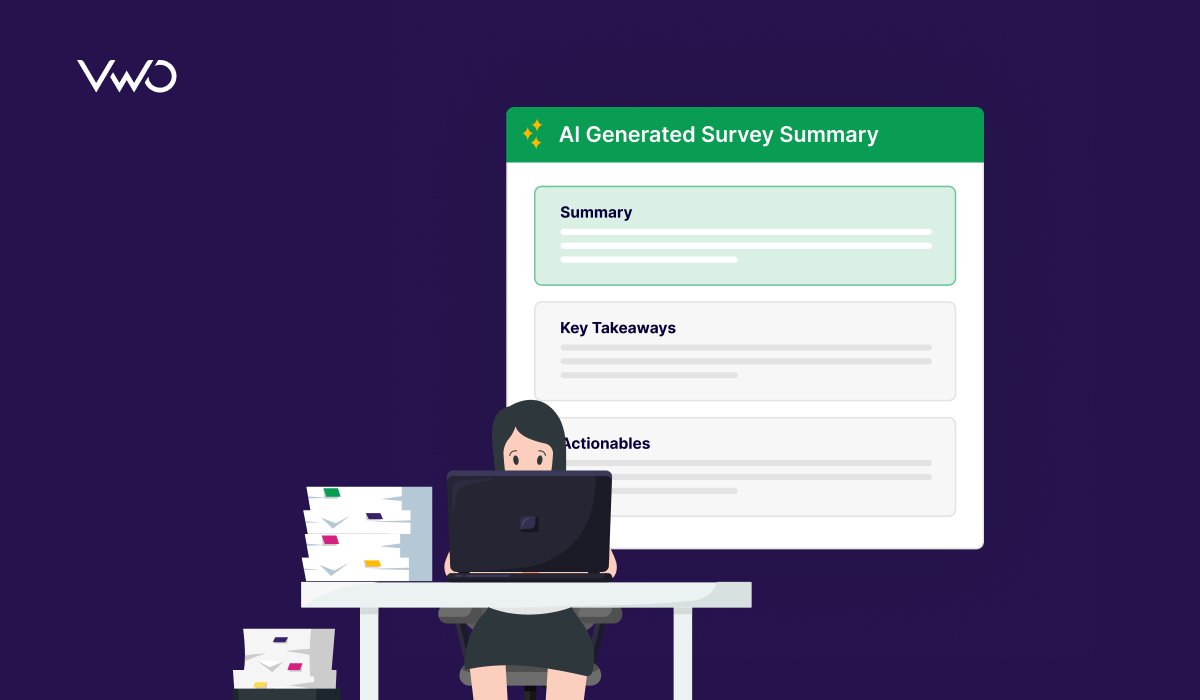
Decoding generative AI
Generative AI is like a tech whiz that looks at a bunch of data, spots the tricks and traits, and then gets super smart about it. Once it’s all savvy, it can make up fresh stuff, create new patterns, and even repeat the information it has learned.
Take the example of Google’s Bard chatbot, trained on a huge dataset of text and codes in more than 1000 languages. It has learned to recognize patterns and properties in text and code and can perform 21 functions, including generating new content and code, answering questions, and more. Additionally, Bard is trained on images, enabling it to write captions, answer questions, and categorize, organize, and share images based on the input text provided. I couldn’t resist and asked it to share photos of a cute baby panda, and it didn’t disappoint me. Aren’t they a feast for the eyes?
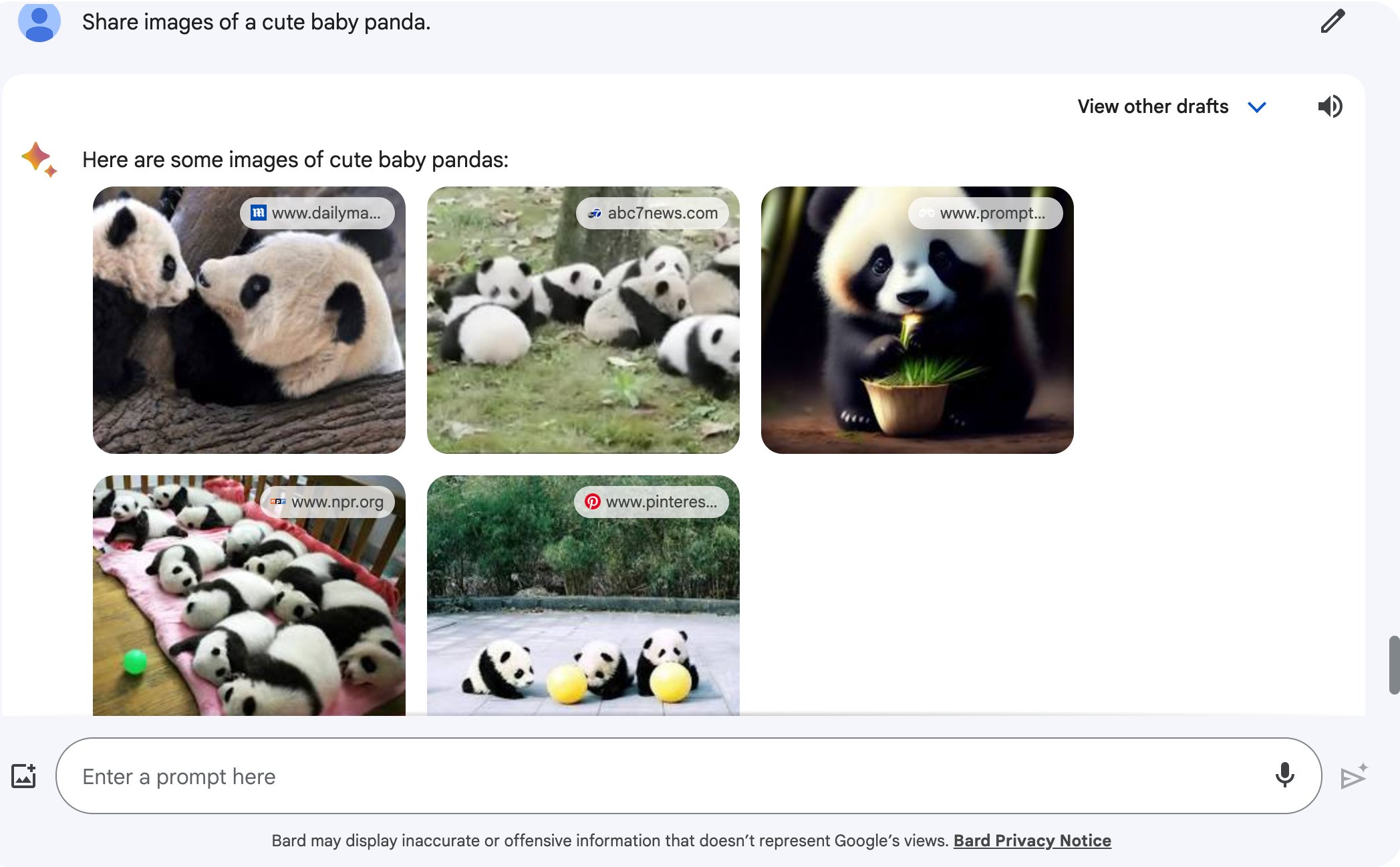
Like Bard, many generative AI applications have come up, such as Sonix for music generation and DAll-E for creating realistic images, revolutionizing everything from healthcare to art and design.
What sets generative AI Apart from traditional AI?
Understanding the distinction between generative AI and traditional AI is pretty straightforward. Generative AI is a subset of AI that has the remarkable ability to craft brand-new content learning from the dataset it has consumed.
On the other hand, traditional AI is like a rule follower. It gets trained for certain jobs by analyzing stuff and making sure it answers in a predefined manner. For example, think of a customer service chatbot like Amazon Lex. The following image shows the backend of the chatbot on the left, where you can predefine output for input, and on the right, the screenshot of the front end shows how it analyzes the user input and responds with what it is trained to respond. So, traditional AI can’t come up with new ways to do a task; it just sticks to the rules it learned.
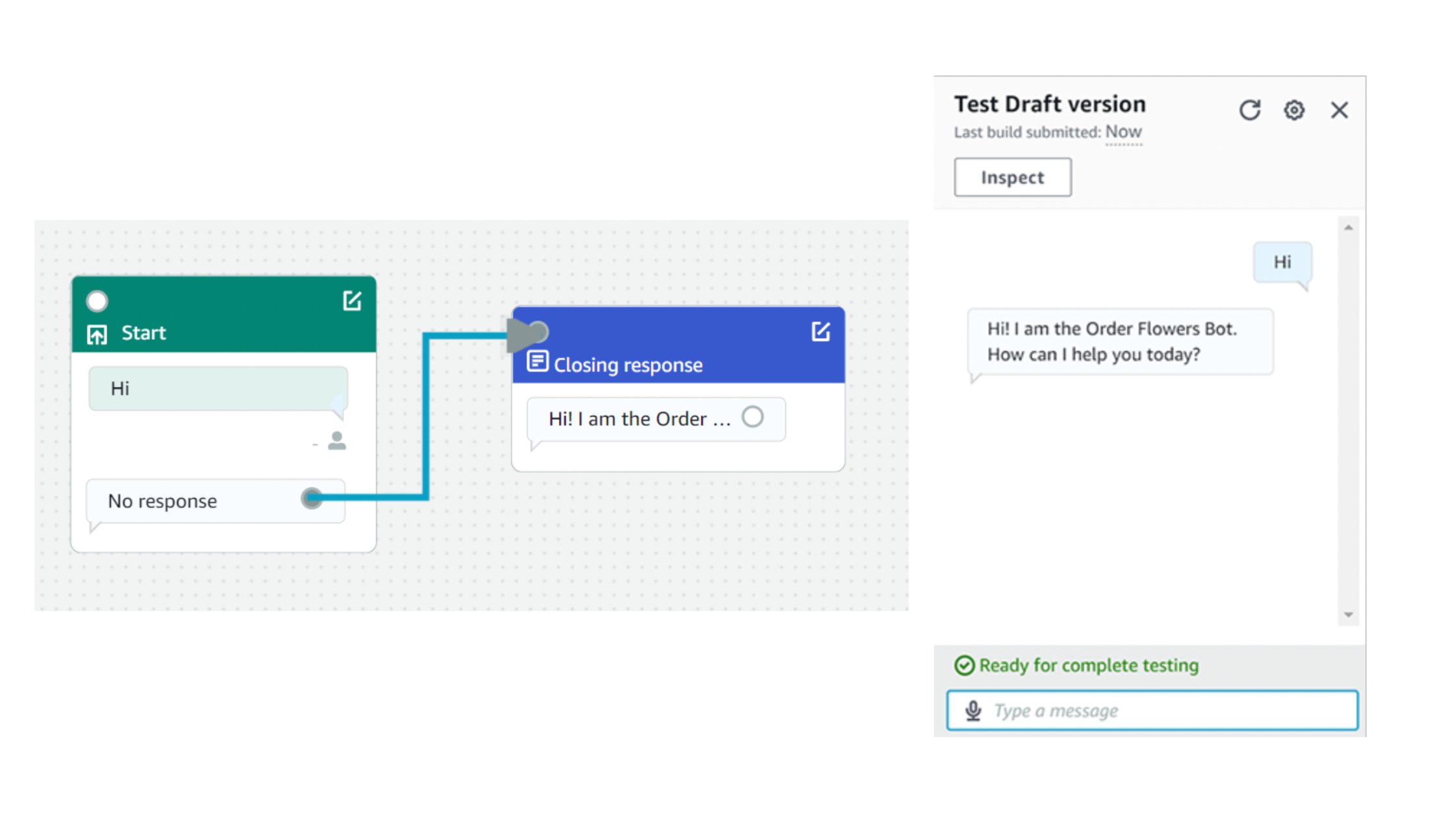
Because of generative AI’s superiority over traditional AI, it is getting adopted faster by businesses. Whether you’re a marketing intern refining your copywriting or a seasoned CMO overseeing the creation of a multi-million-dollar global marketing campaign, generative AI has an application and use case for you. One of the use cases is understanding the voice of your customers with generative AI-backed surveys.
How generative AI can enhance and ease the survey process
a. Automating the process of targeting survey respondents
With traditional survey approaches, audience targeting is often based on generic filters such as funnel stage, demographics, geo-location, etc. As a result, the survey sample may contain a significant proportion of the audience who are non-responsive or irrelevant to the survey questionnaire. It can lead to low response rates and a lack of quality responses, ultimately affecting the accuracy and usefulness of the survey results.
Generative AI offers an elegant solution to these challenges. By leveraging its ability to analyze vast amounts of data, generative AI can create segments based on audience activity and pinpoint the most relevant survey respondents. It ensures the right audience is reached without over-contacting a broader sample. Not only does this approach save your valuable resources, but it also enhances the quality of the data by targeting a more relevant audience, leading to more accurate and insightful results.

b. Creating and personalizing survey questions
Have you ever participated in a website survey and felt like the questions didn’t apply to you? Manual survey creation can sometimes lead to generic or ambiguous questions that miss the mark. It can result in low-quality responses, making it difficult to get accurate and useful insights.
But with generative AI, you can create unique and personalized survey questions that are more likely to resonate with customers and generate high-quality responses. Also, it can seamlessly scale to create customized surveys for a large number of customers without sacrificing the relevance of the survey.
By creating questions that are tailored to the customer’s interests and survey goals, generative AI can significantly increase response rates and address the issue of disengagement that is often seen in traditional surveys.

c. Predicting survey design success and response rate
Sometimes, you wonder if your survey draft is engaging and following best practices. It can lead to a lot of back and forth before publishing, which can increase the lead time.
For this, generative AI automatically assesses survey questions and design, providing scores based on best practices and alerting about any issues. It ensures that your survey is well-structured and effective.
And that’s not all. Generative AI also estimates the percentage of respondents expected to complete the survey and the time it should take. It helps to address the issues of engagement uncertainty, allowing you to send out surveys with confidence.

d. Generating survey summary and insights report
It is a time-consuming task to manually sift through survey data for actionable insights, requiring a dedicated team to collate reports every time.
But with generative AI, you can get a concise summary of your survey results instantly to understand the most important takeaways and determine what actions need to be taken based on the feedback provided by respondents. Also, it actively analyzes the feedback from the survey to suggest specific and actionable steps for improvement. Whether you need to refine a product feature, adjust a marketing strategy, or address customer concerns, generative AI paves an efficient and effective way to drive change to your strategy.

Why generative AI is a survey game-changer
Generative AI-based survey is not just about making the whole process of survey deployment and analysis easier and faster, but also about bringing benefits that are beyond operational gains, ultimately leading to a reduction in spending and resource allocation.
a. Accelerates the rate of adapting to customer expectations
Analyzing survey data can be a time-consuming and challenging task, but it’s crucial for ensuring your website remains aligned with customer expectations. The longer it takes to make necessary improvements to your digital touchpoints, the greater the risk of impacting your website’s ROI. Research shows that a staggering 81% of customers are more likely to make repeat purchases if they have a positive experience. Therefore, any delay in adapting to their needs could drive valuable leads to explore alternative options.
Fortunately, with generative AI, you can streamline the analysis process, drastically reducing the time required to enhance the digital touchpoint experience and promptly meet customer expectations, thus safeguarding your customer relationships and maximizing ROI.
b. Mitigates human bias that can prove costly
Whether you’re crafting a survey or delving into its analysis, there’s always a space for human bias involving misaligning your questions, missing critical response patterns, or inadvertently focusing on the wrong customer segment. These missteps can be costly.
However, generative AI operates solely on data-driven decision-making, provided that it’s trained on a quality dataset (we will discuss it in the next section). It eradicated the possibility of human bias, ensuring you don’t veer down the wrong path or, worse still, commit a blunder that can prove costly.
c. Optimizes human resources allocation
Automation through generative AI can optimize the allocation of human resources within an organization. It is beneficial for product managers and marketers, who can delegate the repetitive and time-consuming aspects of survey administration to AI-powered assistants. These professionals then can allocate their valuable time and cognitive resources only to decision-making and creative brainstorming related to surveys. Another advantage of using generative AI is that it frees up the professionals to work on other tasks, ultimately leading to better human resource efficiency.
Things to think about before diving into generative AI surveys
Generative AI-based survey is a promising tool and you might want to consider it to keep up for the benefit of the business. But here are some considerations you must take into account.
a. Reliance on data quality and quantity
To train generative AI models, companies need a large dataset that represents the complete demography of their customer base. The dataset must be well-organized and labeled. Any misrepresentation or bias in the selection of training data can lead to malfunction of the generative AI-based survey.
For example, an e-commerce brand uses a generative AI-based survey model to gather feedback on a new product line. The model is trained on biased data against certain groups, and as a result, it will sample the wrong audience for a survey. Such a scenario could lead to a low response rate, lack of quality feedback, and a poor business user experience, underscoring the importance of addressing bias in AI models.
b. Budget strain on data protection and privacy
While generative AI technology offers exciting possibilities for improving user experiences, it comes with crucial privacy considerations. The top priority is to enhance user experiences without compromising data security and user privacy. For instance, if we use generative AI to create personalized surveys, we need to collect user data, attributes, and events from business properties. To do this, businesses must obtain explicit consent from users and explain the purpose and scope of data utilization. By taking these measures, we can ensure transparency while still taking advantage of the benefits of generative AI.
Another step is to fortify defenses against unauthorized access, employing robust passwords, encryption, and access restrictions. It puts a strain on the cybersecurity budget. As per survey findings by IBM, AI cybersecurity budgets are 51% greater than they were in 2021 and are expected to climb an additional 43% by 2025. Thus, safeguarding user data in the age of generative AI is an ongoing commitment that requires careful planning and significant investment.
VWO’s AI-powered surveys for swift customer understanding
Let’s move forward to see how VWO is powering its legacy tools like the VWO’s on-page survey to make it easier for businesses to deploy and analyze surveys.
VWO’s on-page survey is famous for its user-friendliness, allowing you to create and deploy surveys with just a few clicks. we have taken it to the next level by introducing an AI assistant that streamlines and accelerates the survey workflow. Let’s take a closer look at what the AI assistant brings to the table and how it can significantly improve your surveying experience.
a. AI assistance to craft surveys
The new AI assistant makes survey creation a breeze, as it generates tailored questions to match the goal you set. You can even regenerate your questions until they’re just right or effortlessly rephrase AI-generated ones with a single click, making the process efficient and saving you precious time.

Suppose, Kim wants to gather user feedback on the new product release through a survey on the company’s web forum, where customers are most active. With VWO’s AI-assisted survey, Kim sets her goal to identify pain points, and the AI assistant generates relevant questions that explicitly ask about user satisfaction with the latest product release. This approach ensures that Kim deploys a survey with precisely the right questions, ensuring she is collecting the right response.
b. AI-generated survey summary with actionable insights
VWO’s AI-powered survey reports deliver a deeper understanding of your audience’s sentiments, providing concise summaries of survey results and valuable feedback. Beyond that, the Generative AI suggests actionable improvements based on the feedback from the respondents, ensuring your surveys don’t just gather insights but also guide you toward meaningful enhancements.

So, when Kim receives a large number of responses, the AI-powered survey reports play a crucial role in providing her with a concise summary of feedback, highlighting important insights and actionable suggestions. For instance, Kim notices that users are expressing confusion about the new interface of the product, which is a recurring theme in the feedback summary. The AI insights recommend a solution, suggesting that Kim should offer a guided tour of the updated interface. This guidance not only saves her time but also equips her with valuable recommendations for improving the feature and staying ahead of competitors by creating fast and continuous change( who still use outdated and cumbersome survey methods.)
An AI assistant like VWO can help you streamline your surveying process, saving your time and resources while delivering valuable insights to improve your product or service. If you want to give it a try, you can sign up for a free trial here and request the feature which is in the beta phase.
Making the most of generative AI-based survey
You must be excited to try your hands on a generative AI-based survey tool, aren’t you? It’s crucial to remember that generative AI tools thrive on precision in their prompts. Here are some handy guide points to help you get the most out of your first survey prompts and design:
- Make sure to specify your goal and the information you seek from the survey (e.g. I aim to assess the impact of ABC product updates and collect user feedback on their experiences, so create survey questions accordingly).
- If you are seeking information about respondents, specify what information you want to seek like company size, age group, location, etc. (e.g. create survey questions to ask about respondents’ company size and location).
- Specify the length of each question, the number of questions, and the tone (e.g. create five open-ended questions with each having 100 characters in length. Keep the tone conversational).
Here is one prompt to put it all together: “Generate five conversational survey questions about ABC product updates, beginning with a query about company size. Each question should be 100 characters long and aim to collect user feedback on their experiences. Make them open or close-ended as per relevance.”
Once the questions are created, you must iterate your prompt till you find suitable survey questions.
The future of generative AI
A survey by Bain & Company predicts a high degree of automation throughout the customer life cycle, especially in demand generation and self-service sales.
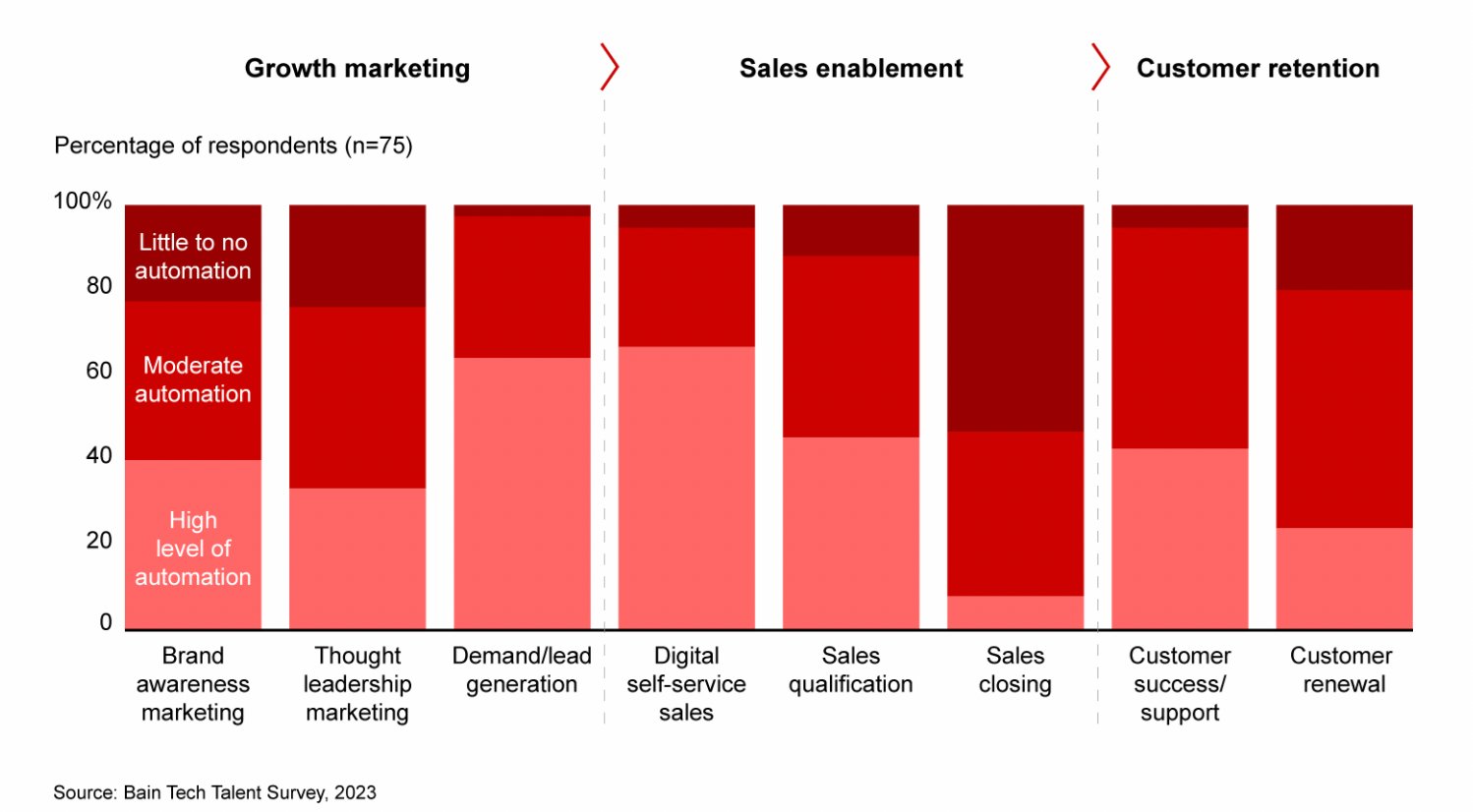
In terms of financial impact, a staggering $79 billion market by 2030 for generative AI-based applications that specialize in automation and improving productivity, and an off-the-shelf AI software market of $227 billion.
Thus, we can safely say that generative AI has immense potential to accelerate automation, reshape industries, and surpass human-level performance, driving a multi-billion-dollar market and transforming the business landscape at an unprecedented pace.
Conclusion
To wrap up, the integration of generative AI in surveys has revolutionized the process by optimizing and automating each step of survey creation. This not only helps businesses keep up with evolving customer expectations but also saves valuable resources. As AI technology continues to advance, we can expect more sophisticated features to be added, resulting in even greater accuracy and speed. With this bright future ahead, the possibilities for businesses to gather valuable insights and make data-driven decisions are endless.
So, like Kim, if your to-do list is seemingly endless and you’re swamped with surveys, make sure to explore generative AI-based survey tools for better decisions and a more efficient workday.
Note: At VWO, we strive to empower our customers with the latest technology. Our goal is to make your complete CRO cycle, from analyzing user behavior to delivering personalized experiences, as streamlined and effortless as possible using generative AI. We are continuously updating our products to ensure that our customers can benefit from this amazing technology and stay ahead in the game. Keep an eye on the product updates page for the latest updates.







